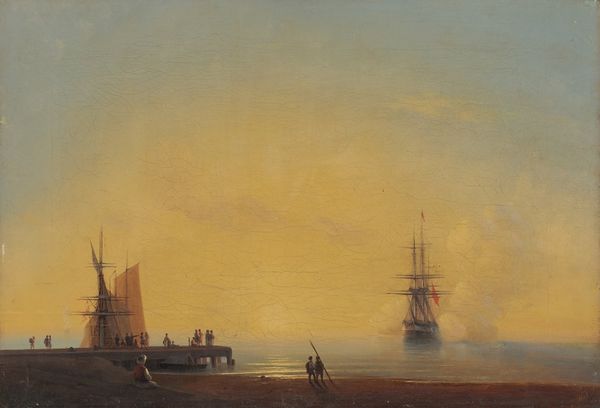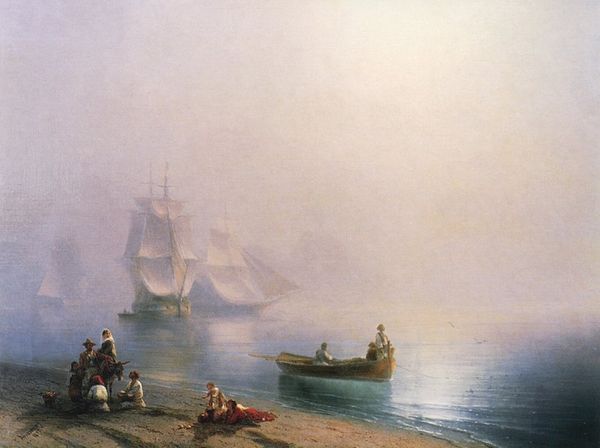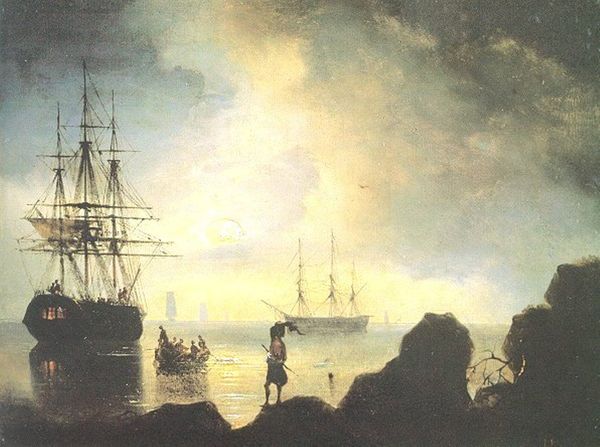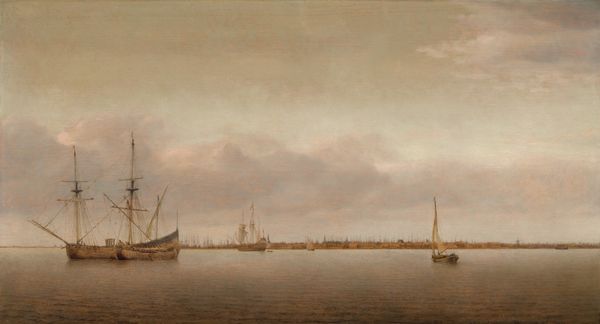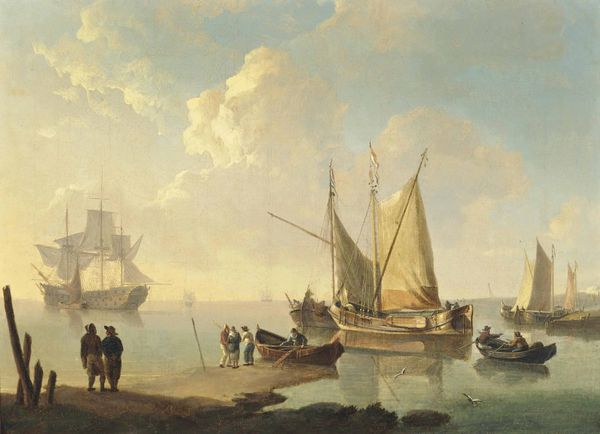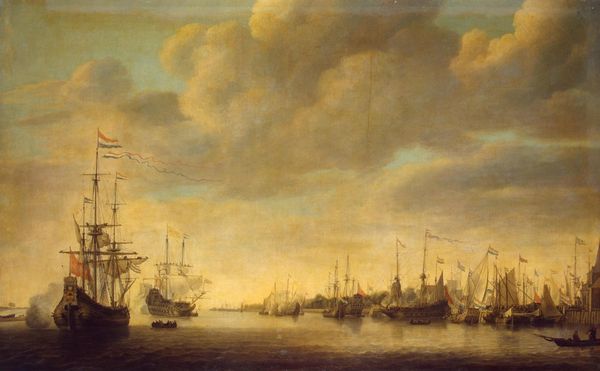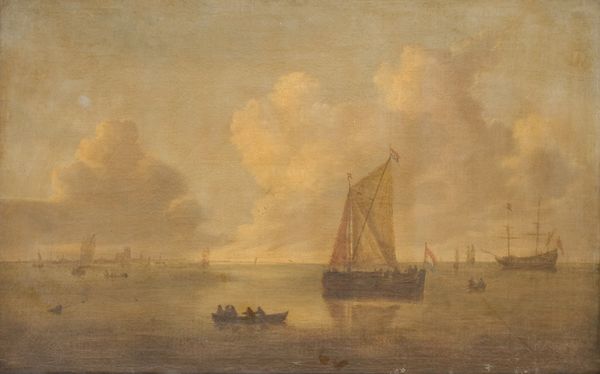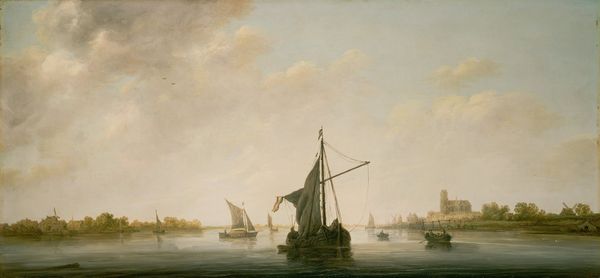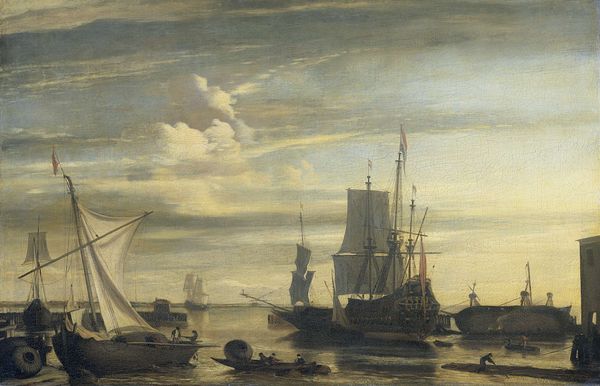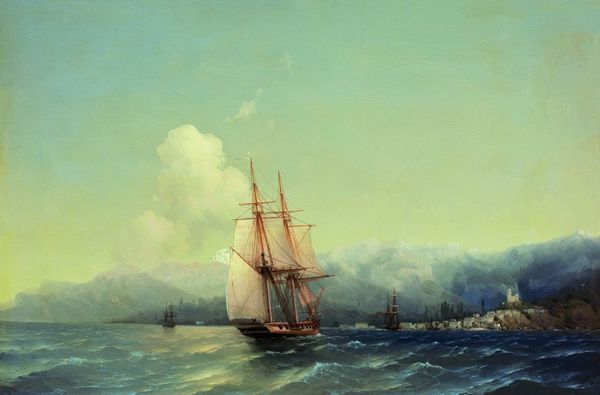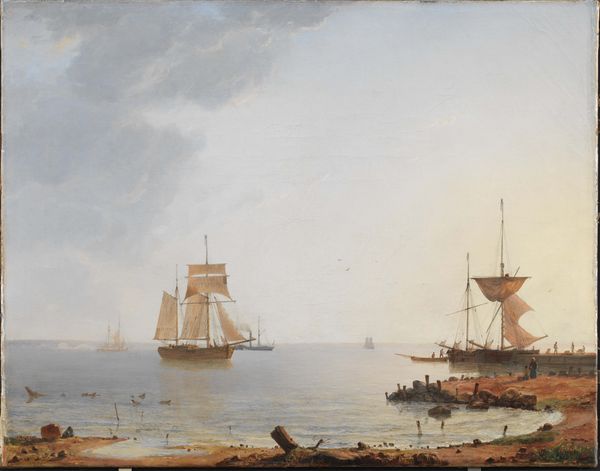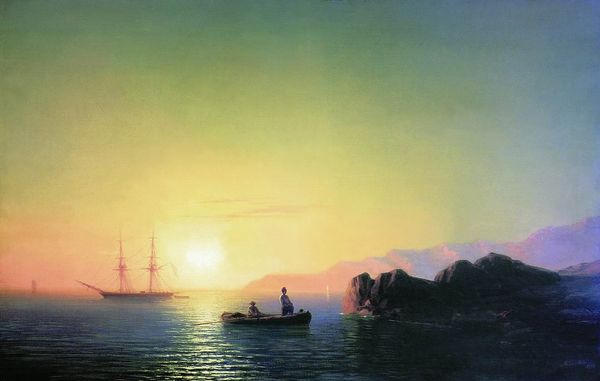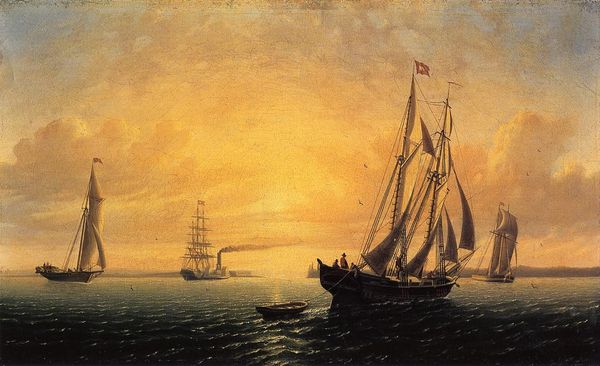
Copyright: Public domain
Curator: Looking at "Russian and French Frigates", completed in 1858 by Ivan Konstantinovich Aivazovsky, the most immediate element that stands out is its tranquil aura. Editor: Yes, there is a certain calmness. For me, it's this pervasive silvery-blue light. There's almost a tangible sense of the cool, moist sea air as two figures are pulling fishing nets from the foreground of a gently undulating shore. I wonder what this canvas has to tell us about mid-19th-century relations. Curator: In visual language, the artist does offer several threads to follow. These ships aren't simply 'ships' after all, but stand-ins for imperial ambitions and power dynamics. Each vessel boasts national colors, visually declaring not only identity, but political and even military posturing within international trade routes of this time. Note how the composition directs your eye towards these floating national emblems. Editor: Good point! The painting really uses light and composition to amplify those ships. The French and Russian flags feel deliberate against that soft sunrise. Aivazovsky was the official painter of the Russian Navy; it is tempting to view this picture, through the prism of how these seafaring entities intersected—culturally, economically, strategically. The Crimean War, which involved both French and Russian fleets, concluded just two years prior to its creation. I find the inclusion of French and Russian ships, so soon after conflict, rather pointed. Curator: Indeed. Given his appointment, it is plausible Aivazovsky attempts to visually bridge a space toward peaceful alliances; an offering. In those subtle shifts of blues into yellow-golds across the sky, can’t we find the subtle suggestion of hope following times of discord? Editor: That’s compelling. And by foregrounding these humble fishermen, perhaps he also highlights the human element, the everyday lives continuing irrespective of geopolitical tensions, pulling nets for daily catch beneath emblems of imperial designs? Curator: Precisely. Symbolically, consider them anchoring daily life amidst grand narratives. It enriches and contrasts against naval exploits. The sun is an eternal signifier for new beginnings, wouldn’t you agree? Editor: Definitely. I now see the light of the artwork differently after your remarks. It shifts this from being a maritime scene, toward something far more layered—something nuanced within brushstrokes, beyond merely water and ships.
Comments
No comments
Be the first to comment and join the conversation on the ultimate creative platform.
